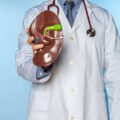Comment:
Non-alcoholic fatty liver disease (NAFLD) is a spectrum of liver disease encompassing simple hepatic steatosis, non-alcoholic steatohepatitis (NASH), cirrhosis, and hepatocellular carcinoma (HCC). NAFLD-related HCC accounts for a significant proportion of the HCC burden, and its prevalence is estimated to increase in parallel with the rising obesity epidemic. While cirrhosis is a well-characterised risk factor for NAFLD-related HCC, its prevalence in patients with non-cirrhotic livers (NCLs) has been increasingly recognized. Importantly, NAFLD‐related HCC in NCL is associated with poor survival and poses a significant challenge in terms of surveillance.
The aim of this article is to examine the risks and prediction models for NAFLD-related HCC with a focus on patients with NCLs.
Key learnings:
NAFLD-related HCC risk factors include diabetes mellitus, antidiabetic medications, obesity, and altered gut microbiota. While its risks increase over 10-fold in established NASH compared to isolated steatosis, up to 30% of patients with NAFLD-related HCC do not have cirrhosis. These patients are usually male and possess a larger unifocal tumour. Despite these statistics, current HCC surveillance guidelines are not applicable to this patient population. As routine HCC surveillance of all patients with NAFLD and NCL is not cost-effective, strategies based on risk stratification scores (e.g., the polygenic risk and/or GALAD scores) should be used to identify high-risk patients. Ultimately, developing optimal risk stratification models for the early detection of these patients is of paramount importance.


Hepatic inflammatory responses in liver fibrosis